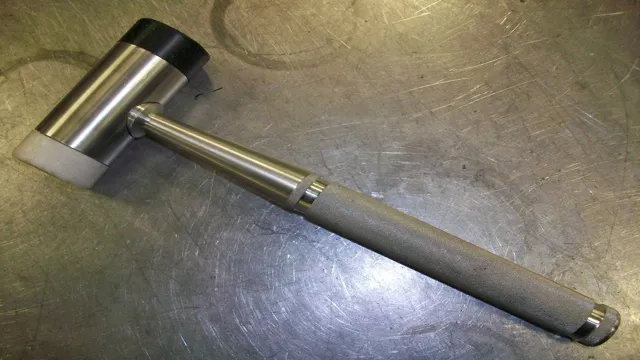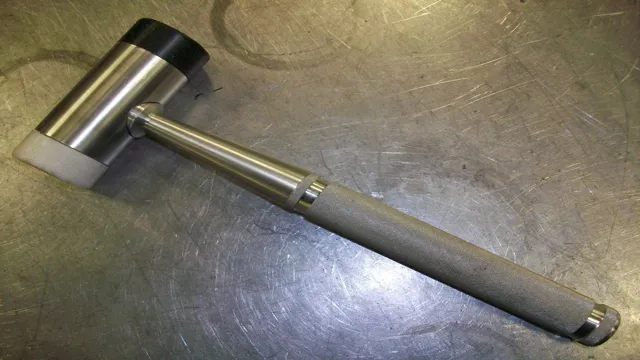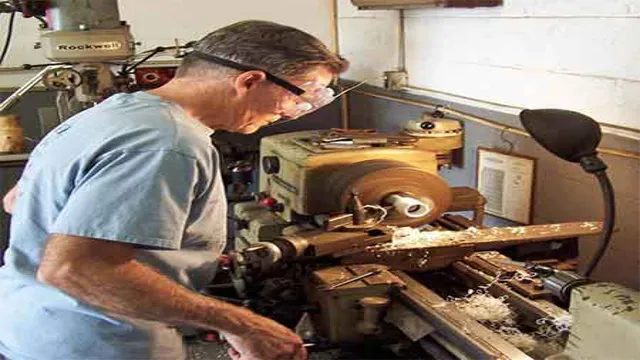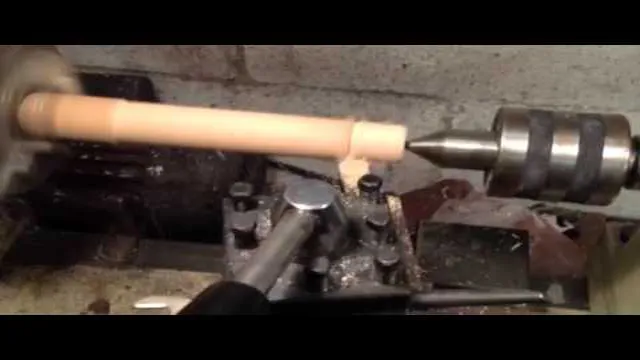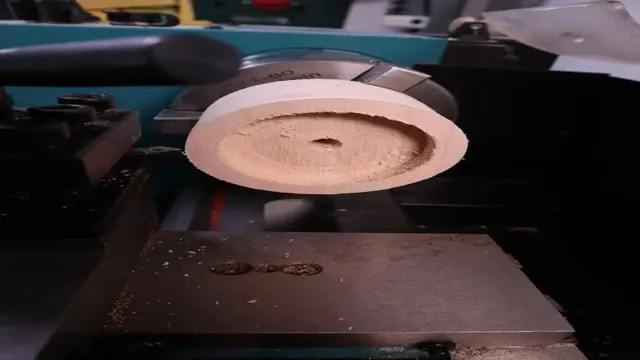How to Build a Metal Lathe: Tips and Tricks for a Successful DIY Project
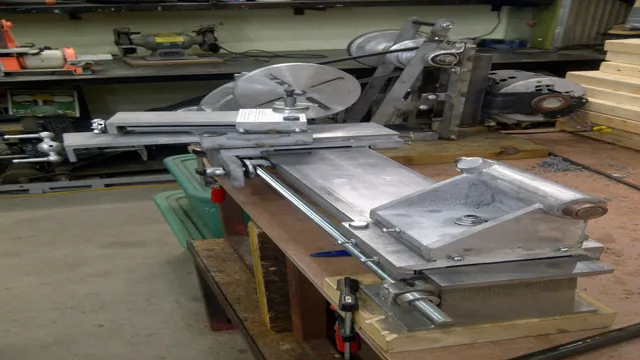
Metal lathes are a fantastic tool for all metalworkers, both amateurs and professionals alike. They can be used for a wide range of projects, from turning small parts to creating large sculptures. However, buying a metal lathe can be quite expensive, and for some people, it may not be feasible.
The great news is that learning how to build a metal lathe is not as hard as it may seem. With a little bit of know-how, some basic tools, and a little patience, you too can build your very own metal lathe. In this post, we will walk you through everything you need to know about building a metal lathe, from choosing the right materials to putting it all together.
So, let’s dive in and learn how to build a metal lathe that can help you create amazing pieces of metalwork!
What is a Metal Lathe?
A metal lathe is a machine tool that is used for shaping and cutting various types of metal. These powerful machines have been around for centuries and are essential in many manufacturing industries. But did you know that you can actually build your own metal lathe at home? Although it may seem daunting, with the right tools and guidance, anyone can build their own lathe.
All you need is a good set of plans, some basic metalworking and welding skills, and patience. As you build your lathe, you will have the opportunity to learn new skills and techniques, and you’ll end up with a valuable tool that will serve you for years to come. With this simple guide, you’ll be well on your way to building your very own metal lathe.
Definition and Uses
A metal lathe is a machine tool used in metalworking that rotates a workpiece on its axis while a cutting tool is used to remove material from the piece. The cutting tool is usually stationary and is moved along the piece to remove material, creating the desired shape or finish. Metal lathes are commonly used in manufacturing applications, creating parts ranging from simple bolts and screws to complex engine components.
They can also be used for precision work, such as crafting musical instruments and producing sophisticated tooling for other machines. The versatility of the metal lathe makes it an essential tool for many industries, including automotive, aerospace, and medical manufacturing. With its ability to create precise and high-quality parts, it is no wonder that the metal lathe is a cornerstone of modern manufacturing.
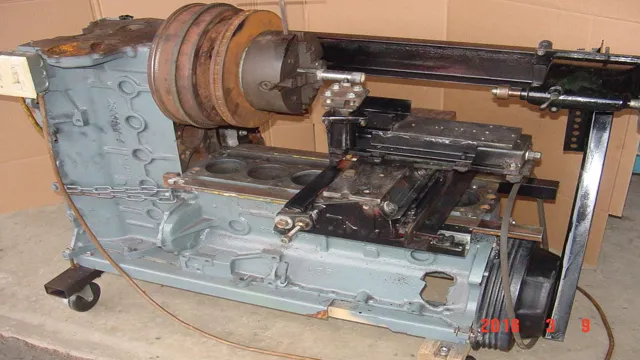
Types of Metal Lathes
A metal lathe is a machine tool that is used to shape and cut various types of metal. It works by rotating a workpiece on its axis, while a cutting tool is used to remove excess material from the piece to create the desired shape. There are several different types of metal lathes, including benchtop lathes, engine lathes, toolroom lathes, and turret lathes.
Each type of lathe is designed for specific purposes and has its unique features and capabilities. Benchtop lathes are perfect for small-scale projects and DIY enthusiasts, while engine lathes are larger and more powerful, making them suitable for industrial applications. Toolroom lathes are used in machine shops and factories for precision work, while turret lathes are designed to handle complex and high-volume production runs.
Regardless of the type of lathe being used, they all require a skilled operator to ensure that they are used correctly and safely.
Materials Needed for Building a Metal Lathe
If you’re interested in learning how to build a metal lathe, there are a few key materials that you’ll need to get started. First and foremost, you’ll need access to a good set of instructions or plans to follow. From there, you’ll need a variety of tools and supplies, including a metal cutting blade, a metalworking lathe, a set of chuck jaws, a chuck key, and a drill bit set.
You’ll also need a good supply of metal to work with, such as steel or aluminum, as well as a solid surface to mount your lathe on. Depending on the design you choose, you may also need additional materials like gears, bearings, and belts. With the right tools and materials, however, building a metal lathe can be a rewarding project that can provide you with years of use and enjoyment.
List of Required Tools and Equipment
When it comes to building a metal lathe, there are a variety of tools and materials needed to get the job done. The essential materials required for this task include steel tubing, a lathe bed casting, nuts and bolts, as well as a set of plans or blueprints for the specific lathe design you want to build. Other essential equipment includes a metal-cutting saw, a drill press, a welder, and angle grinders.
You’ll also need hand tools such as wrenches, clamps, pliers, hammers, and screwdrivers. Building a metal lathe is a challenging project that requires a high level of expertise in welding and metalworking. However, if you have the skills and the right tools, it can be an incredibly rewarding experience.
With diligent effort and attention to detail, you can succeed in building your very own metal lathe from scratch.
Metal and Other Materials Needed
When it comes to building a metal lathe, there are a variety of materials you’ll need to get started. Some of the most crucial include the metal for the base and frame, as well as the spindle and chuck. You’ll also need to pick up some ball bearings, belts, pulleys, and a motor to power everything.
In addition, you’ll want to grab some cutting tools, like carbide inserts and turning tools, as well as various other small metal pieces and hardware to hold everything together. Remember, the quality of the materials you choose will have a big impact on the quality of your finished product, so it’s worth investing in high-quality components if you want your lathe to perform at its best. All in all, building a metal lathe is a complex and challenging project, but with the right materials and a little bit of know-how, anyone can do it.
So why not roll up your sleeves and get started on your own custom lathe today?
Step-by-Step Guide on Building a Metal Lathe
If you’re a DIY enthusiast looking to build a metal lathe, you’ve come to the right place. Building a lathe may seem like a daunting task, but with the right set of skills and tools, it can be a fun and rewarding project. To get started, you’ll need a plan that outlines the components needed to build the lathe.
The main components include the headstock, tailstock, carriage, bedways, cross slide, and apron. You can either source these components from an old lathe or build them from scratch. Once you have all the components ready, you can start by building the bedways.
The bedways form the foundation of the lathe, and you’ll need to make sure they are straight and true. Next, assemble the headstock and tailstock, ensuring that they are aligned correctly and move smoothly. Finally, build the carriage, cross slide, and apron, and attach them to the bedways.
With all the components in place, you can now start installing the gears and motors to power the lathe. It may take some time and effort, but the end result will be a fully functional metal lathe that you built from scratch.
Preparation and Planning
Preparing and planning are essential steps before building your own metal lathe. First, determine the type of metal lathe you want to build and research its technical specifications thoroughly. You will need to prepare a list of the necessary tools and materials required to construct your machine, including metal stock, bearings, belts, and other hardware materials.
Additionally, you must map out the design and layout of your metal lathe, deciding on the machine’s dimensions, the bed length, and the type of chuck to use. Once you have meticulously planned out your metal lathe’s design and know the required tools and materials, you can begin exploring possible cost-effective options for sourcing materials to keep expenses down. With thorough preparation and planning, you will be well equipped to undertake the rest of the steps involved in building your metal lathe.
Building the Base and Frame
Building a metal lathe requires attention to detail and careful planning. To start, constructing the base and frame is crucial to ensure stability and precision in the lathe’s operation. These structures serve as the foundation and skeleton of the machine, respectively.
The base should be made of sturdy materials like welded steel or iron, while the frame can be assembled using rectangular tubing. It’s important to ensure that both the base and frame are level and square to prevent any vibrations or movements during operation that can lead to inaccuracies in machining. Once the base and frame are complete, it’s time to move on to the next step in building a metal lathe.
Assembly of the Headstock and Tailstock
Building a metal lathe can be a challenging but rewarding experience, especially when it comes to assembling the headstock and tailstock. These two components play a crucial role in the functionality of the lathe, as they provide the support and rotation needed for cutting and shaping metal. To assemble the headstock, you’ll need to start by attaching the spindle and its bearings to the base.
Then, you can add the pulleys and motor, making sure to properly align and tension the belt. The tailstock is a bit simpler, as it just needs to be attached to the bed and aligned with the headstock. Once both components are securely in place, you can begin to test and adjust the machine as needed.
With these steps completed, you’ll be well on your way to having a fully functional metal lathe that you built yourself. So, grab your tools and get ready to tackle this exciting DIY project!
Installation of the Spindle and Chuck
The installation of the spindle and chuck are critical to the overall success of building a high-quality metal lathe. It is essential to ensure that these parts are correctly installed to produce accurate results. To begin the installation process, first, clean the spindle and chuck thoroughly.
Use a small amount of oil to lubricate the spindle before inserting it into the headstock. Tighten the spindle firmly until it is secure. Next, secure the chuck onto the spindle, ensuring that it is tightly fastened.
You can use a torque wrench to ensure that the chuck is correctly tightened. Finally, insert a metal rod through the chuck and test its stability by rotating it. If everything seems to be stable, you can continue with the rest of the build process.
Building a metal lathe requires attention to detail, but by following these steps, you will be one step closer to building a high-quality lathe.
Wiring the Electric Motor
When it comes to building a metal lathe, one of the most important steps is wiring the electric motor. It’s vital to ensure the motor is properly connected to power and all safety precautions are taken. Begin by selecting a motor that meets your needs, as well as the electrical requirements of your workspace.
Next, determine the correct voltage and amperage needed for the motor and wiring. When connecting the wires, use a wire stripper to remove the insulation from the ends of the wires to avoid any shorts or loose connections. Follow the manufacturer’s instructions for any specific wiring configurations.
Finally, attach the motor to the lathe and test it to make sure it’s running properly. Properly wiring the electric motor is key to creating a powerful, efficient, and safe metal lathe that will deliver reliable results for years to come.
Tips for Building a Metal Lathe
If you’re in the market for a metal lathe, building one yourself can be a satisfying and cost-effective option. Before you start, it’s important to have a clear plan of what you want to build and what tools and materials you’ll need. A good place to start is by researching designs and plans online – there are plenty of free resources available.
One of the key components of a lathe is the spindle, which should be made from high-quality steel and capable of supporting the weight of the workpiece. Additionally, a motor and belt system is required to power the lathe, and you’ll need to have a solid foundation and ways to secure the lathe to your workbench. Other important considerations include chucks, tool rests, and cutting tools.
Overall, building a metal lathe requires a good amount of skill and patience, but can result in a powerful and versatile machine that you can be proud of.
Safety Precautions
Building a metal lathe is not an easy task and it is important to take safety precautions to ensure that the process is as safe as possible. The first and most important thing to do is to read and fully understand the owner’s manual before beginning any work. Secondly, always wear appropriate safety gear such as safety glasses, gloves, and ear protection.
It is also important to keep the area around the lathe clean and free from any slip or trip hazards. Before using a lathe always make sure that it is properly grounded and connected to a circuit breaker. Additionally, never leave the lathe unattended while it is running and always use the proper tool rest when working with tools.
Finally, do not wear loose clothing or jewelry when operating the lathe as they can easily get caught in moving parts leading to accidents. By following these safety tips, you can ensure that you have a safe and enjoyable experience when building your metal lathe.
Troubleshooting Common Issues
Building a metal lathe can be a challenging but fulfilling DIY project. However, there are common issues that many beginners face when starting out. One important tip to keep in mind is to always use the right tool for the job.
Using the wrong tool can result in damaged parts or a broken lathe. Additionally, make sure to double-check all measurements before making any cuts or modifications. Precision is key when it comes to building a metal lathe.
Another potential issue to watch out for is alignment. Even a slight misalignment can affect the lathe’s performance, so take the time to ensure everything is properly lined up. Finally, don’t be afraid to ask for help or guidance from more experienced builders.
A little bit of extra knowledge can go a long way when working on a complex project like building a metal lathe. By taking these tips into consideration, you can avoid some of the common pitfalls and build a functional and reliable lathe.
Conclusion
After putting in the time and effort to build your own metal lathe, you’ll have the satisfaction of knowing that you’ve crafted a valuable tool with your own two hands. Just like with any DIY project, the process may be challenging, but the end result is worth it. So grab your materials, fire up the torch, and get to work on building the metal lathe of your dreams.
And remember, when it comes to building a metal lathe, where there’s a will, there’s a way – and of course, a sturdy lathe bed and precise clamping mechanisms.”
FAQs
What materials are commonly used to build a metal lathe?
Steel, aluminum, and cast iron are commonly used materials to build a metal lathe.
Can I build a metal lathe without welding equipment?
Yes, it is possible to build a metal lathe without welding equipment by using bolts and brackets to assemble the components.
How long does it take to build a metal lathe?
The time required to build a metal lathe varies depending on the complexity of the design and the skills of the builder. It can take anywhere from a few weeks to several months.
What size lathe should I build?
The size of the lathe you should build depends on your specific needs and the type of work you plan to do. A smaller lathe may be more suitable for hobbyists, while a larger lathe may be necessary for professional use.
What tools and equipment are necessary to build a metal lathe?
Some of the essential tools and equipment needed to build a metal lathe include a lathe bed, spindle, tool holder, tailstock, and motor. Other tools may include a saw, drill, tap and die set, and welding equipment.
Can I use plans or blueprints to build a metal lathe?
Yes, using plans or blueprints can be helpful in building a metal lathe. They can provide detailed instructions and measurements for each component, making the process easier and more efficient.
Are there any safety considerations I should be aware of when building a metal lathe?
Yes, building a metal lathe involves working with heavy machinery and tools, so safety should be a top priority. Make sure to wear protective gear, such as gloves and safety glasses, and follow all instructions carefully to avoid injury.

